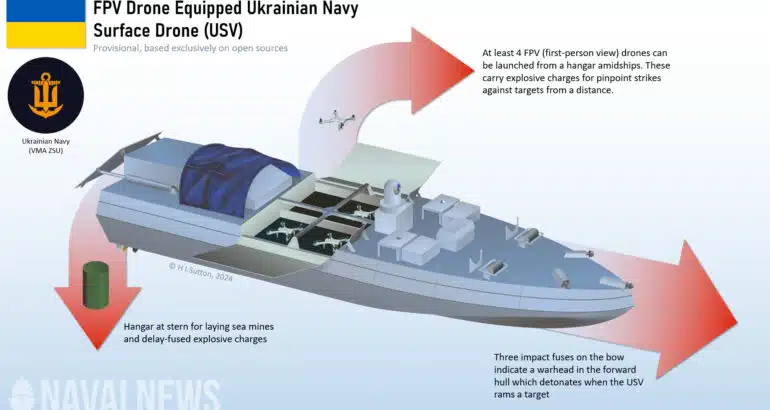On Monday, January 6, 2025, it was reported that operators of our FPV kamikaze drones destroyed two Russian "Pantsir" systems and one short-range air defense system "Osa" in the temporarily occupied part of Kherson region. This incident drew attention not only due to the high number of enemy air defense assets eliminated in a single strike but also because of the depth of penetration required to execute this attack.
It has now been revealed that this strike was carried out using surface sea drones, which acted as "aircraft carriers" in this operation, as noted in a publication by The War Zone portal.
The authors of the publication specifically reference information from the Ukrainian Center for Strategic Communications SPRAVDI, which clearly states that the Ukrainian Defense Forces now have the capability to strike the enemy using marine "aircraft carrier" drones.
They also refer to statements from Russian "war correspondents," who report the emergence of surface drones capable of carrying FPV drones, which can be used in raids near the shores of temporarily occupied Crimea.
Journalists from TWZ specifically mention that the exact types of FPV drones and marine unmanned "aircraft carriers" that could have struck the "Pantsirs" are currently unknown. However, they indicate the possibility that the Magura V5 marine drone could serve as a carrier for at least three FPV drones.
It is worth noting that the first use of "aircraft carrier" sea drones by the Ukrainian Defense Forces took place in early December 2024 when the Navy dealt a new blow to Russian occupiers at the so-called "Boyko Towers."
As for the technical aspects of using this type of unmanned weaponry, there are several points to consider. On one hand, for stable control of FPV drones, especially for strikes at distances of several dozen kilometers, relay stations are necessary, and it remains an open question whether a marine "mother" drone for the UAVs could serve as such a relay.

On the other hand, launching FPV drones from a surface drone minimizes the chance of encountering any physical obstacles, which in turn increases the signal transmission range and the likelihood of hitting an enemy target in the coastal zone.
The very fact that our unmanned boats are equipped with FPV drones can be seen as a logical development of the direction in which our surface drones previously gained the ability to carry RPV-16 "Shmel" and even launchers for 122-mm rocket shells for self-defense and engaging enemy targets.
Earlier, Defense Express also reported on how the Russian solution for the automatic evasion of UAVs from anti-drone systems works and its effectiveness.